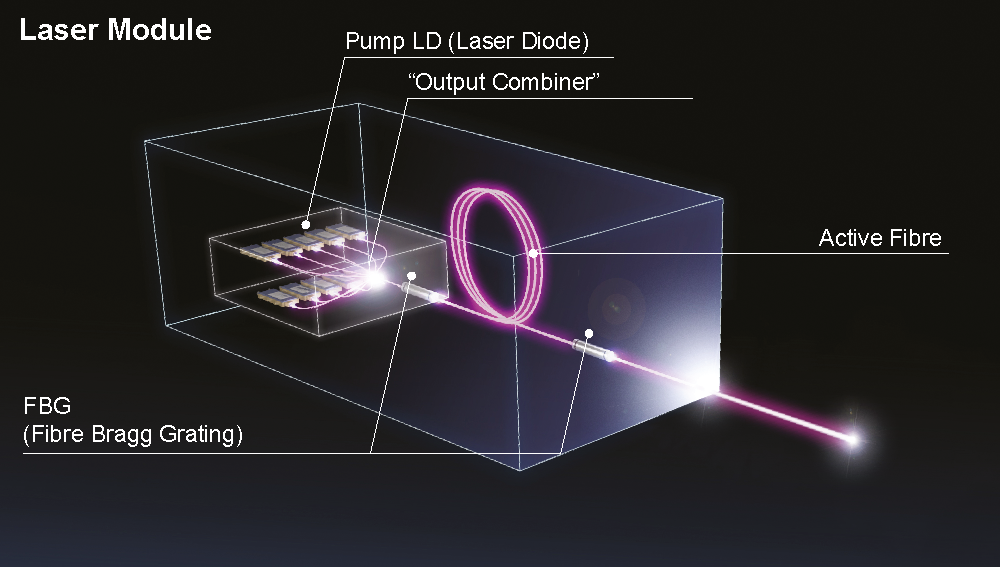Fiber laser operating in the mid-infrared spectral region at around 2 microns is an interesting study for laser researchers because the laser can be widely applied in the field of LIDAR (Light Detection and Ranging), telecommunications, welding and photocopying. Furthermore, in the field of medical surgery such as endourology (coagulation or tissue cutting), thulium and holmium fiber lasers have been claimed as the most suitable laser source compared to erbium and ytterbium doped laser fibers, especially because lasers with 2-micron wavelengths have high absorption coefficient in water and gas. Passive Q-switched and mode-locked fiber lasers based on thulium-doped fiber laser (TDFL) cavity was made using nano nickel oxide (NiO) particles as saturable absorbers (SA). The NiO synthesis was carried out by using a facile sonochemical method and the prepared NiO thin film was sandwiched between two optical fiber ferrule connectors in the TDFL ring cavity. By controlling the loss and gain in the cavity, stable Q-switching operation was obtained. The repetition rate and pulse width were tunable from 6.71 kHz to 19.58 kHz and from 9.16 μs to 4.24 μs respectively, at different pump powers, ranging from 528 mW to 711 mW. The Q-switched TDFL was centered at 1900.52 nm and had maximum pulse energy and slope efficiency of 0.31 μJ and 2.58%, respectively. On the other hand, self-starting mode-locked TDFL was achieved by employing 10 m scandium-doped fiber into the ring cavity and remained stable within a pump power range of 821–967 mW. The TDFL mode-locked had a central wavelength of 1928.81 nm, at a threshold pump power of 821 mW. The repetition rate and pulse width were 8.10 MHz and 61.27 ns, respectively, while the slope efficiency was measured to be 2.20 %.
Fiber laser Q-switched and mode-locked secara pasif berbasis rongga fiber laser terdoping-thulium (thulium-doped fiber laser/TDFL) telah dibuat dengan menggunakan partikel nano nickel oxide (NiO) sebagai saturable absorber (SA). Sintesis NiO dilakukan dengan menggunakan metode sonochemical dan menyiapkan lapisan tipis NiO yang dijepitkan diantara dua konektor ferule fiber optic di dalam rongga cincin TDFL. Dengan memonitor rugi dan penguatan di dalam rongga, kerja Q-switching yang stabil dapat dihasilkan, laju pengulangan dan lebar pulsa dapat ditala (tunable) berturut-turut dari 6,71 kHz sampai 19,58 kHz dan dari 9.16 ?s sampai 4.24 ?s pada daya pemompa berbeda mulai dari 528 mW sampai 711 mW. TDFL Q-switched dipusatkan pada panjang gelombang 1900,52 nm, energi pulsa maksimum 0,31 µJ dan efisiensi slope 2,58%. Di sisi lain, self-starting mode-locked TDFL dicapai dengan menggunakan fiber terdoping-skandium 10 m ke dalam rongga cincin dan tetap stabil dalam kisaran daya pompa 821–967 mW. TDFL bekerja pada panjang gelombang pusat 1928,81 nm di daya pemompa ambang 821 mW. Laju pengulangan pulsa dan lebar pulsa berturut-turut 8,10 MHz dan 61,27 ns, sementara efisiensi slope telah diukur dan menghasilkan nilai 2,20 %.
The result of this experiment showed that NiO material can be used as an alternative SA material for the generation of stable pulse laser fiber at 2.0 µm wavelength region.
Author: Moh Yasin
Related article: https://www.sciencedirect.com/science/article/pii/S0030401819303918





